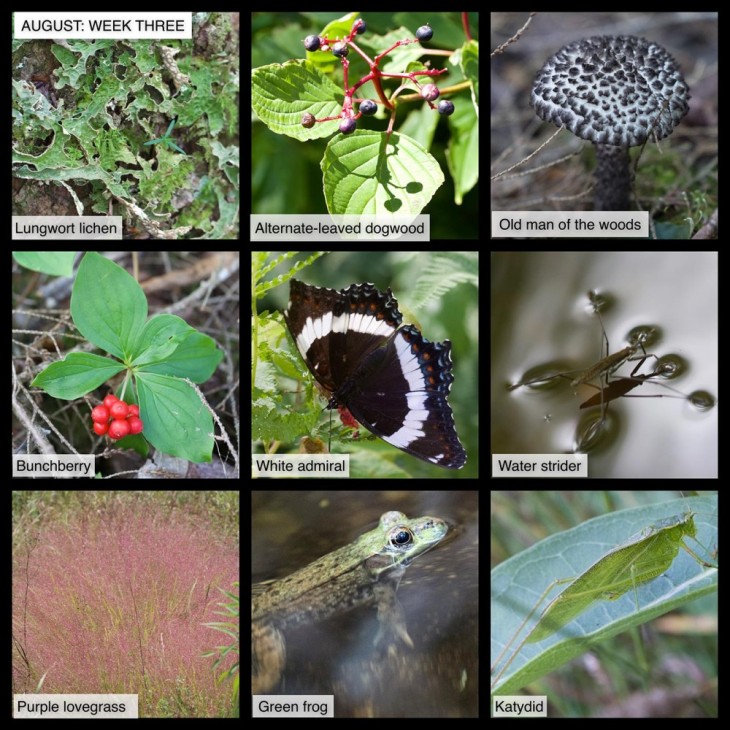By early August, many birds have completed their parenting duties, and many migratory species will soon be heading south. However, second-brooding birds, such as house wrens, may still in the process of raising their later summer batch of young. We discovered this young house wren in the middle of a busy road, and intervened to get it to safety.
If you discover a fully feathered chick on the ground, as a general rule, it is best to leave the bird where it is and let a parent bird attend to it. In this case, after moving the wren to a safe spot next to the road and observing it for some time with no sign of Mom, we took it to Vermont Institute of Natural Science Center for Bird Rehabilitation, which raises many orphaned baby birds each summer. Thank you, VINS!
House wrens nest in natural cavities, but they also favor a number of human-made shelters (we expect this little bird may have fallen out of a telephone pole box). These birds are feisty little scrappers – an attitude, we can now attest, from this little bird’s repeated hissy fits during the trip to VINS, that they develop early in life. Here’s an Outside Story article from our archive by Carolyn Lorié, describing the phenomena of wrens’ use of “dummy nests” as territorial markings.
Bright orange jewelweed, which is blooming now on roadsides and along wetlands, is a favorite of hummingbirds. Its leaves have a compound with anti-inflammatory properties that may help to soothe poison ivy rashes. A second name for jewelweed, spotted touch-me-not, refers to the way that its ripe seeds pop out of their pods at the slightest touch.
One of our favorite summer butterflies, northern pearly eye, is in the air right now. Unlike the butterflies you typically see visiting flowers in gardens and fields, this beautiful medium-sized butterfly is a primarily a woods butterfly, and the pretty rippled lines on its wings help it blend it with bark. Northern pearly eyes feed on tree sap from birch, willows and poplars…and also dine as less appealing items, such as dung. You’ll often see these butterflies perched on the side of trees, especially near grassy openings.
We’ve been finding many specimens of black trumpets, mushrooms that are prized in foraging. However, please note, like many fungi, they have look-alikes that may be toxic. Black trumpets are also called black chanterelles, horns of plenty and trumpets of the dead. They are mycorrhizal fungi, and you often find them growing in moss near the trunks of oaks and beech trees.
In late summer, Canada mayflower produces berries that look like speckled jelly beans, and over this month, they’ll ripe to a gorgeous pinkish-red. Also known as frog berry and wild lily-of-the-valley (though not kin to garden plant), Canada mayflower spreads by its rhizomes, and in areas that have been left undisturbed long enough, can form big patches. Its berries aren’t generally considered an important wildlife food, but chipmunks seem to like them.
What have you noticed in the woods this week? Submit a recent photo for possible inclusion in our monthly online Reader Photo Gallery.


